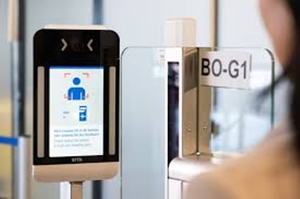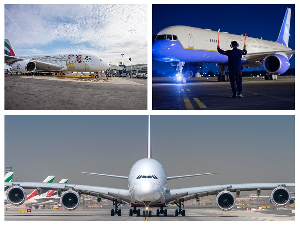- Home - News
- TWI News | TV
- Polls
- Year In Review
- News Archive
- Crime & Punishment
- Politics
- Regional
- Editorial
- Health
- Ghanaians Abroad
- Tabloid
- Africa
- Religion
- Election 2020
- Coronavirus
- News Videos | TV
- Photo Archives
- News Headlines
- Press Release
Business News of Sunday, 7 April 2024
Source: aviationghana.com
Biometrics holds the key to smarter digital travel – SITA
In 1930, only around 6,000 passengers were travelling by air. By 1934, this had risen to just under 500,000. Fast-forward to 2019 and it had exploded to 4 billion travelers.
In fact, the International Air Transport Association (IATA) projects 8 billion air travelers annually by 2040. The demand for air travel is booming.
To prepare for this, 425 major construction projects (worth around US$450 billion) were already put underway at existing global airports. According to the Centre for Aviation, the industry also invested in 225 new airport projects in 2022.
Bricks and mortar infrastructure is only part of the solution though. Without state-of-the-art, adaptable digital solutions, airlines and airports will struggle to manage passenger numbers. This will affect the quality of the travel experience they’re able to deliver.”
SITA’s Biometrics White Paper, ‘Face the Future’ highlights how the surge in air traveller numbers places extraordinary pressure on existing and new airports, national borders, and airline resources. In short, “existing paper-based and manual travel infrastructure and legacy processes simply won’t be able to cope”.
The solution, explains SITA, is harnessing the power of facial and fingerprint biometrics to create a smoother, safer, and slicker air transport experience. By applying advanced technological solutions SITA will also solve other industry challenges, like space constraints, specialist staff shortages, and evolving passenger wants and needs.
The white paper takes us behind the scenes by showcasing successful case studies like the Star Alliance Biometric initiative and the Indian government’s DigiYatra program. Both cases use the end-to-end biometric passenger processing solution SITA Smart Path.
Stefan Schaffner, VP of Airports at SITA, explains: “SITA Smart Path biometrically enables every step of the passenger journey, from mobile enrollment to aircraft boarding and every point in between and beyond. With facial recognition across as many airport touchpoints as you need, it lets passengers manage their identity across their whole journey, in a unique and touchless way. The final result is a radically improved travel experience.”
The white paper goes on to outline more solutions using advanced biometrics technology. These include SITA Flex, a common-use passenger processing platform, and SITA Border Management, which covers border control, risk intelligence, and travel authorization. Both solutions are well recognized in the industry today and used by more than 40 airports globally. The white paper also breaks down SITA’s Digital Travel Credentials (DTC) solution, a hotly anticipated verifiable digital identity shared before arrival (with the passenger’s consent) for seamless border crossing.
As a member of both the IATA’s One ID initiative and the International Civil Aviation Organization’s DTC, SITA is leading the way in rolling out border-grade DTCs. They’re also helping define rigorous standards around passenger identity management within biometrics. An exciting example is how SITA DTCs were used to create Aruba’s Happy One Pass, a collaboration which lets passengers arriving at the Caribbean island nation of Aruba “can now disembark at international arrivals and cross the border without stopping or even showing a travel document”.
The future of air travel is clearly outlined in the white paper – one that’s safe, ethical, and fully embraces biometrics. It emphasizes the need to prioritize privacy, flexibility, and adaptability.
The white paper’s release, along with its case studies and insights, reveals that the future of travel isn’t some distant concept anymore. It’s happening now. The global demand for travel is rising, and biometrics is at the forefront of this transformation.











